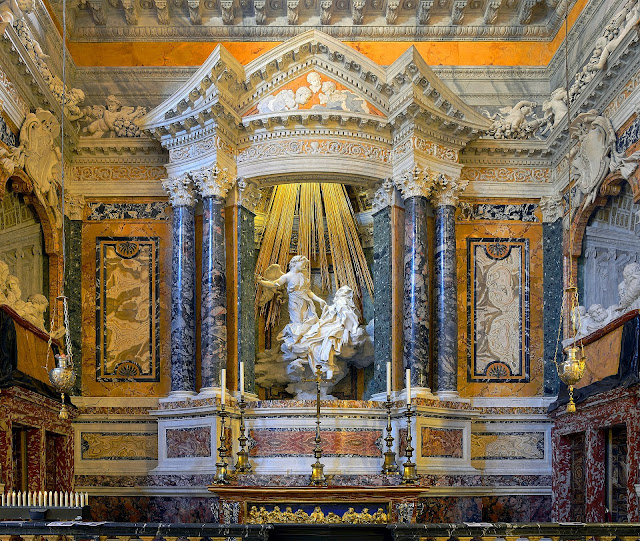Continuing on with our consideration of some of the great counter-reformation churches of Rome, we turn to Santa Maria della Vittoria which was built between 1608-1620 and dedicated to Our Lady of Victory.. As is typical of churches of this period, especially in Rome, its walls are absolutely covered with gilt decoration and multi-coloured marbles and frescoes. Tragically the church suffered a fire in the early 19th century so the original icon that had been enshrined was lost in the fire, as was the original apse decoration. The church was also used to station Napoleonic troops at the end if the eighteenth century and much was stolen from the church during this period as well.
 |
| The icon surrounded by rays of glory behind the high altar |
The church is comprised of a central nave with chapels going down the length of the nave. It is within one of these chapels that is found one of the most famous works of art in all of Rome, the Ecstasy of St. Teresa by Bernini -- and it is this work in particular that makes this Roman church one to see.
The rest of the church also has plenty to offer while you are there however. Various components of the design commemorate a victory for Catholicism in Bavaria and also against the Ottomans in Vienna and so these themes can be found within the decorative scheme, such as in the nineteenth century apse (the original was lost to a fire in the sanctuary in 1833) which depicts "The Entrance of the Image of the Madonna into Prague."
 |
| The 19th century apse fresco |
Also to be found is this inscription taken from 2 Samuel 12:28 which fully reads "the victory be ascribed to my name."
A few further looks at the various chapels lining the nave and some of the accompanying artwork.



















